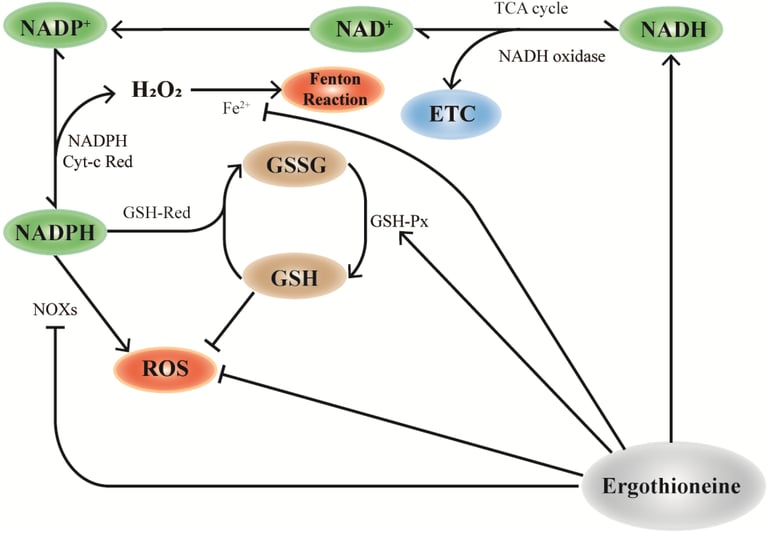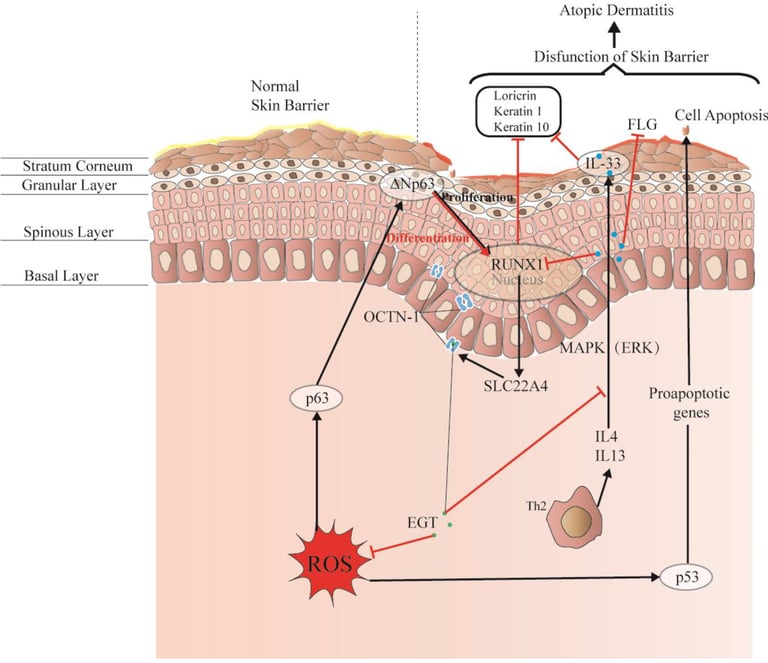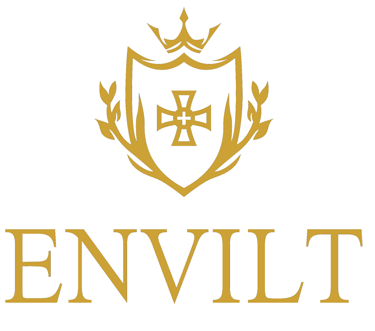
Ergothioneine:
The Cellular Guardian
Ergothioneine: The Cellular Guardian
Abstract
Ergothioneine is a unique thiol-containing amino acid with exceptional antioxidant properties, capable of protecting cells against mitochondrial dysfunction, inflammation, and age-related degeneration. Its specificity for oxidative hotspots makes it a promising cytoprotective compound.
Introduction
Chronic oxidative stress is a major driver of cellular aging and disease. Unlike general antioxidants, ergothioneine is actively transported into mitochondria and sites of damage through the OCTN1 transporter, concentrating where protection is needed most.
Mechanism of Action
Ergothioneine quenches singlet oxygen, peroxynitrite, and hydroxyl radicals. It accumulates in tissues with high oxidative stress (liver, kidneys, brain), and protects mitochondrial DNA and proteins from degeneration.
Scientific Evidence
• Cheah et al. (2013) demonstrated that knockout of the ergothioneine transporter in C. elegans shortened lifespan and increased oxidative damage.
• Human tissues actively retain ergothioneine, suggesting evolutionary selection for its protective role.
Conclusion
Ergothioneine acts as a targeted antioxidant, protecting cellular integrity in high-stress environments. It plays a unique role in aging prevention and mitochondrial resilience.
References
Cheah, I. K., Ong, R. L., Gruber, J., Yew, T. S., Ng, L. F., Chen, C. B., ... & Halliwell, B. (2013). Knockout of a putative ergothioneine transporter in Caenorhabditis elegans decreases lifespan and increases susceptibility to oxidative damage. Free Radical Research, 47(12), 1036–1045. https://doi.org/10.3109/10715762.2013.848398
Ready to defend your cells from within?
Explore CellVital Complex™ ,
the mitochondrial antioxidant your body was built to preserve.


Fig 1. Mechanism of EGT and NAD+ cyclic pathway. In mitochondria, the consumption of NAD+ participates in the TCA cycle of cell energy metabolism and NADP+ production by NAD is influenced by NAD kinase, which further generates NADPH. NADPH can be used as the substrate of glutathione reductase (GR) to reduce GSSG to glutathione (GSH), which is necessary for the activities of the antioxidant enzymes glutathione peroxidase (GPx) and glutathione transferase (GST) and is one of the important ways to improve the antioxidant capacity of cells. EGT promotes this effect by regulating the action of NAD+ pools in mitochondria. Additionally, the antioxidant properties of EGT can directly remove excess ROS, upregulate the activity of GSH-px, and synergically participate in the antioxidant effect of cells.
Fig 2. EGT potentially regulates RUNX1 via the protective skin barrier. Additionally, EGT can potentially downregulate the inflammatory factor IL-33 induced by MAPK kinase, reduce the production of inflammatory markers (loricrin, keratin 1, and keratin 10), and indirectly regulate apoptosis caused by p53/63 by inhibiting the excessive increase in ROS. Interestingly, EGT and RUNX1 protein expression induce a strong binding energy related to the proliferation and differentiation of keratinocytes or skin stem cells, and ultimately promote the renewal of skin barrier function.





